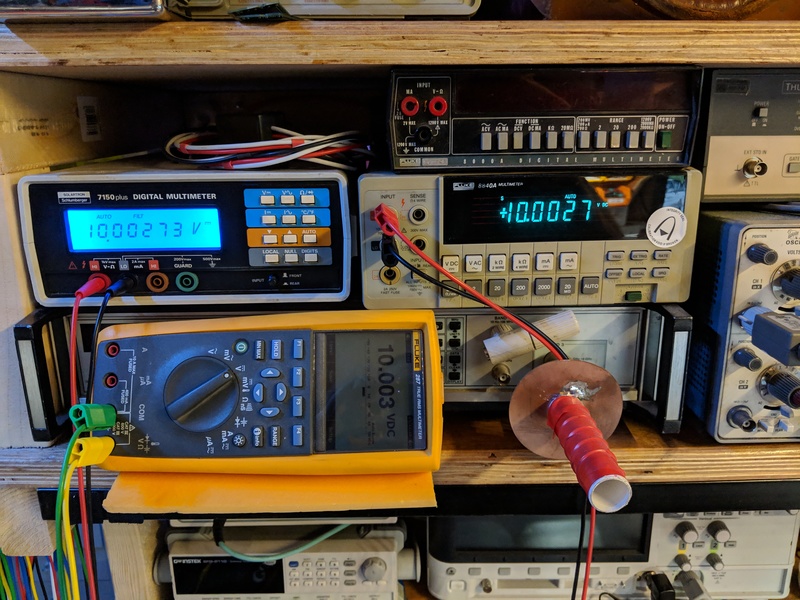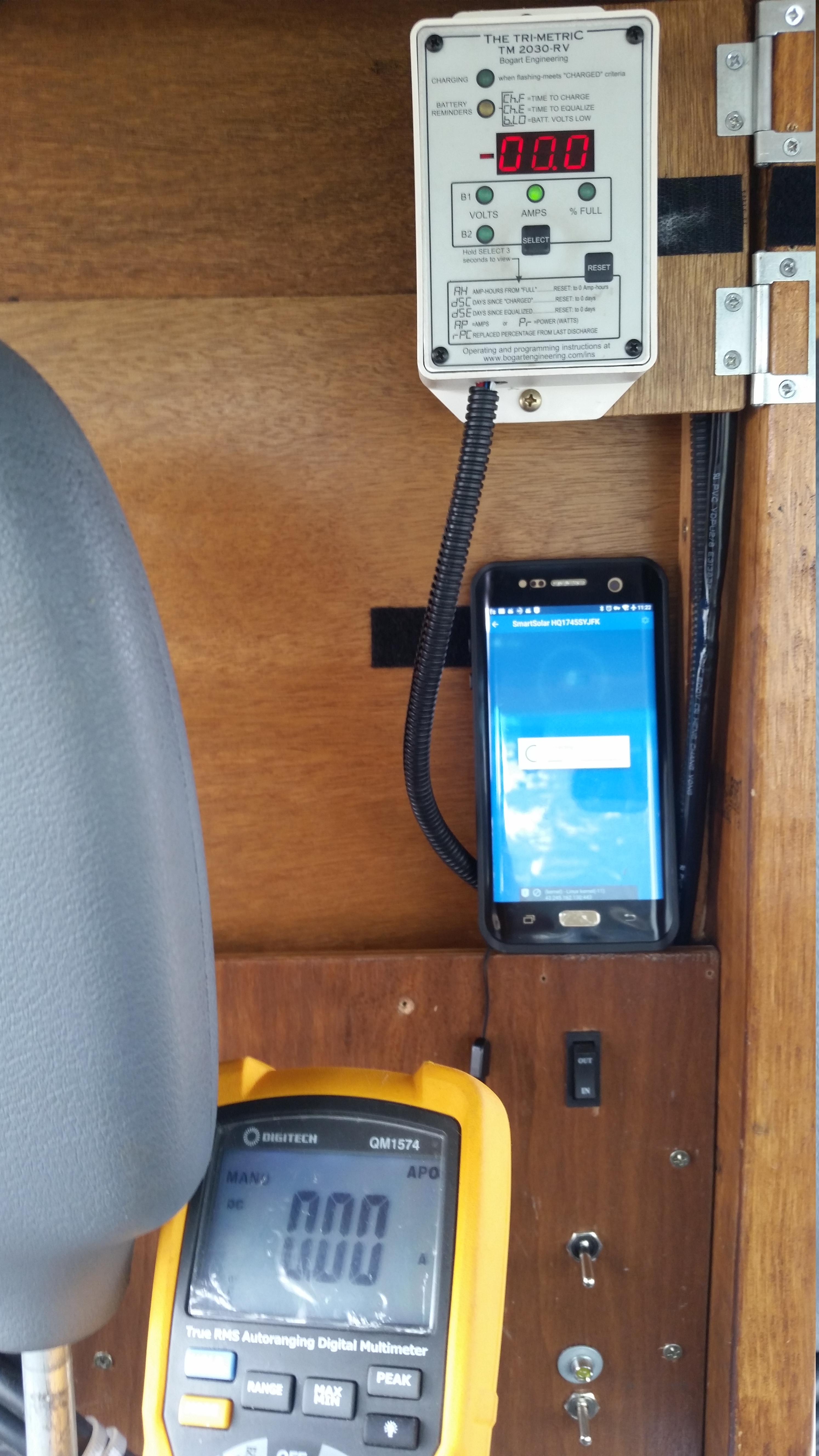A few weeks ago there was a discussion here concerning the accuracy of the measured Volts and Amps that the MPPT charge controllers make.
Any charge controller needs to be able to measure Voltage at the very least. Current is measured on good charge controllers to make SOC calculations. The current Victron range of MPPT charge controllers are no exception.
One thing to bear in mind though is that the MPPT is built to charge batteries, it needs to take Voltage and current measurements in order to charge the battery properly, but it does not need to be super accurate. It is a battery charger, not a calibrated laboratory grade measuring instrument!
In order to verify the accuracy of the measured units some good test equipment is needed. I happen to have access to some good test equipment at my home. Whenever I want to make accurate measurements I check my equipment first with a known Voltage Standard. I connect several of my meters up to the Voltage Standard at the same time and ensure that they all agree with one another.
My voltage standard is old and has drifted over the years, but what matters is that it is stable and I can re-calibrate it against the HP meter at work which is certified annually.
The test equipment
On the left is a Solartron 7150 plus 6.5 digit multimeter.
On the right is a Fluke 8840A 5.5 digit multimeter. This one is my favorite, it was built in 1984 and is still deathly accurate. It also has a 10GΩ input impedance so it does not "load" the circuit or device under test. In fact, when you remove your test leads the Voltage is still displayed until you short the test leads!
Below, on it's side is my Fluke 287. It's my most accurate hand held multimeter. I'll use this for current measurements because it can measure up to 10A while the other ones only go up to 2A.
All meters agree with a 4.775V reference:
Next is a 10.002V reference, all meters agree. The Flue 287 moved up a range and dropped a digit.
Setting up
My telephone has Bluetooth, but I need that for taking the photographs. My iPad is too big and wouldn't sit where I needed it to. My Asus tablet is smaller, but is Android 5 and doesn't let the devices connect.
I quickly made a fake "CCGX" out of a RaspberryPi and a USB to serial converter. I connected the MPPT up to this an ran the remote console on the Asus tablet.
Now we can see the Voltage and Current values that the MPPT is measuring. Looks good so far:
I have connected the Voltage test leads right at the terminals:
Let's measure!
Please click on the corresponding images at the bottom of this post for larger size images. I realize that the values on the tablet are difficult to read.
In this instance I am measuring the Voltage and current at the Battery terminals.
Solartron measuring Amps, Fluke measuring Volts. Amps are spot on, Volts are off my maybe 10mV, who cares.
Next is the measurements at the PV terminals. Once again, Amps on the left meter, Volts on the right meter. Not too bad, PV Volts is off by 80-90mV, but not a big deal.
What about the Load Output? I switched to the Fluke 287 so that I could measure higher current.
Not a bad result either. It's pretty good at around 5A. At around 9A it's OK, 100mA is not a show stopper.

Conclusion
I think the accuracy perfectly adequate for proper functionality.



